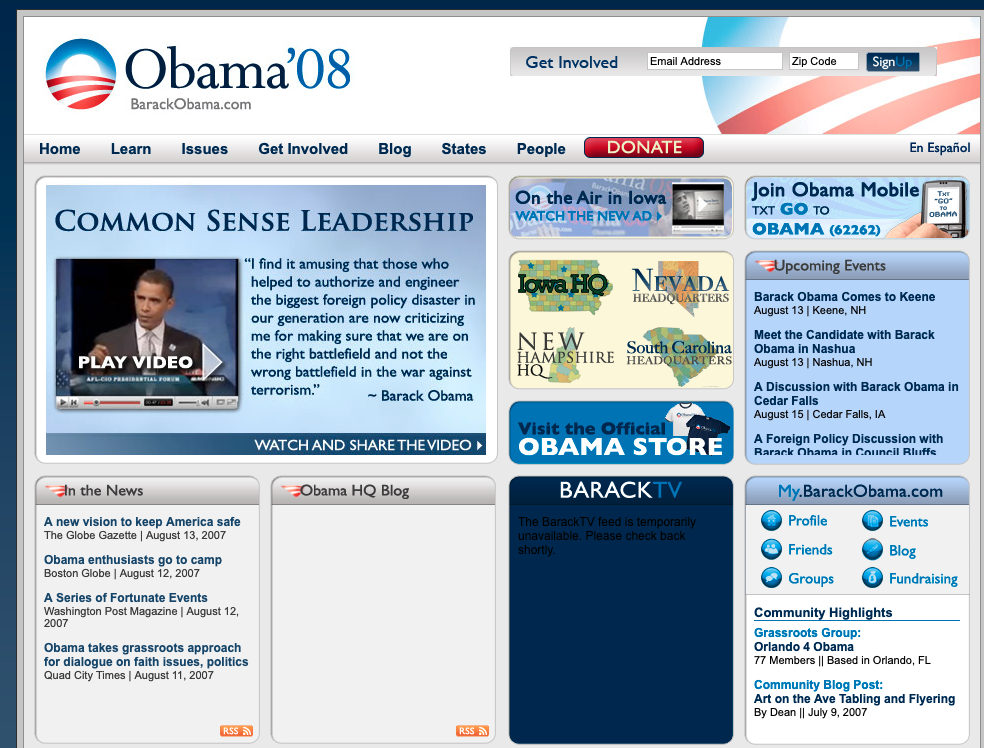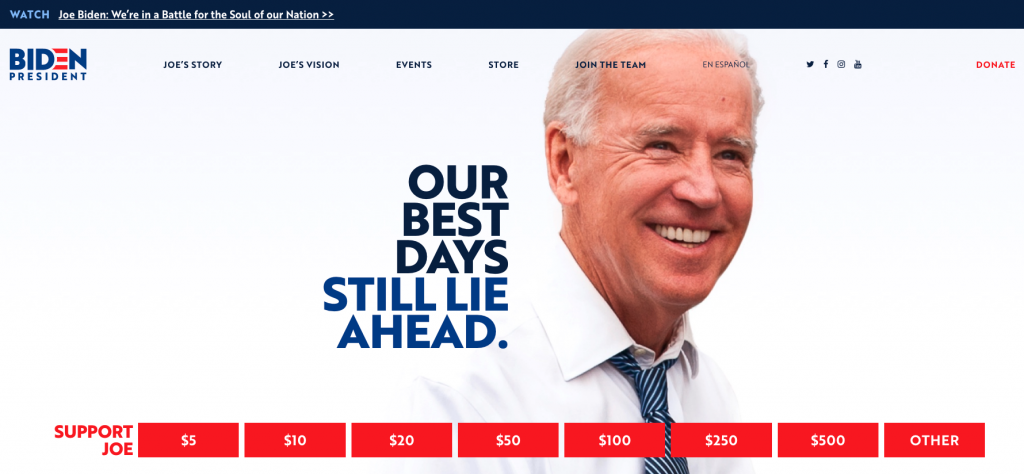When building a new website for a client we almost always start the design process with the homepage. We do this for a few different reasons:
While the homepage remains critical, the role it plays has changed pretty dramatically over the last ten or so years.
In the late 2000s, we thought of a site’s homepage almost like the front page of a newspaper. While the homepages we designed included branding elements, the emphasis was on promoting the newest content. We prioritized the needs of returning visitors with an established relationship to the site over those of new visitors.
While not something we worked on, the homepage of Barack Obama’s 2008 campaign website (screenshot taken August 14, 2007) is a good example of what a homepage typically looked like. While the distinct Obama branding is there, the emphasis is on promoting the latest news articles, blog posts, videos, and upcoming events.

We designed a lot of sites that looked similar to this ten years ago.
Ultimately, we took this approach because we thought of the homepage as a destination. In the late 2000s we had limited ways to promote new content and we still expected users to visit the site homepage frequently to keep up with the brand. There are a few reasons for this:
Ten or so years ago, if a user wanted to know what was going on with your organization, you could reasonably expect they would visit your homepage to find the latest content. Today you would expect someone who wants to keep up with your organization to be on your email list or to follow you on social.
All of this has led us to change the emphasis of the homepage these last few years.
If ten years ago the homepage was the front page of a newspaper, today we see it more as an elevator pitch. Our focus has shifted away from keeping visitors up to date with the latest news. Instead, we use the space to educate visitors about the brand and ultimately to convert them into email subscribers, customers, or donors.
The current homepage (screenshot below from August 14, 2019) of the Joe Biden Presidential campaign (also not a client of ours) is a good example of what you see now. The emphasis is on establishing an overall brand and driving donations.

In designing homepages for our clients now, our focus is not typically on communicating the most important content on a given day. Instead it is on telling the overall story of the organization and inspiring people to get involved in some way.
Sign up today to have our latest posts delivered straight to your inbox.